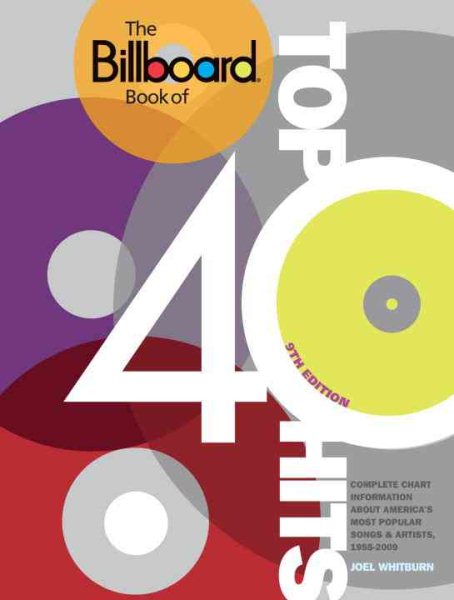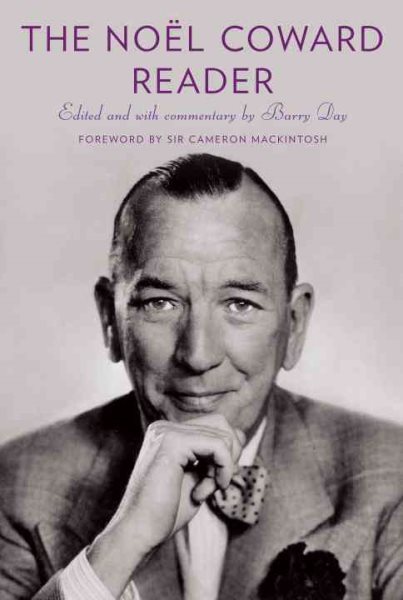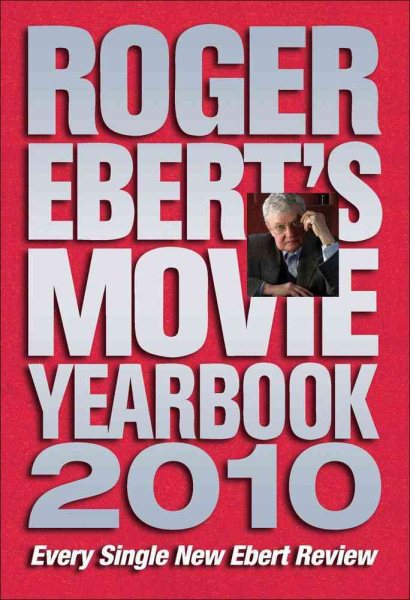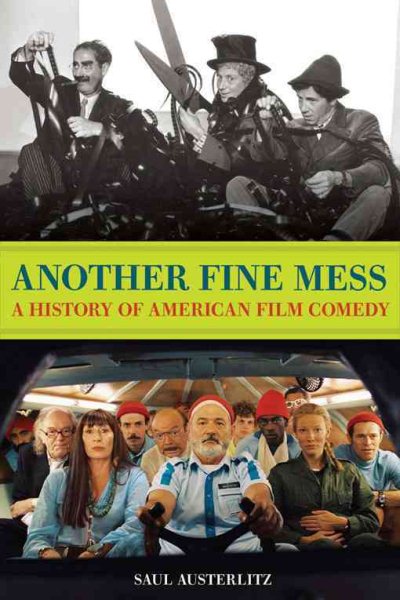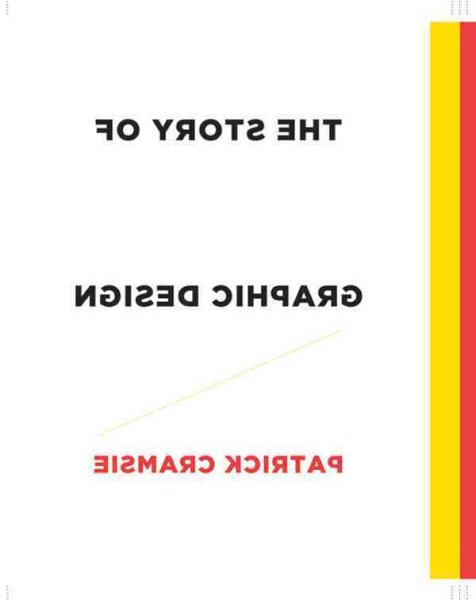Arts!
A selection of our new and noteworthy materials on the Performing Arts as well as other Fine Arts
Tuesday, November 30, 2010
A Museum of One's Own: Private Collecting, Public Gift
"In this beautifully and generously illustrated publication (featuring more than 70 black-and-white and 130 color reproductions), Higonnet (chair, art history dept., Barnard Coll.) examines the origins and growth of collection museums that developed as wealthy Europeans and Americans acquired fine and decorative art objects for their oftentimes specially built homes. Arising during the late 19th and early 20th centuries, collection museums were reactions to the large, public survey museums like New York's Metropolitan Museum of Art. Although diverse, they were characterized by their founders' personal art collections and installations within domestic settings. Over the course of a decade of research, Higonnet studied letters, auction records, photographs, and other documents pertaining to renowned and obscure collection museums owned by Sir Richard Wallace, Duke of Aumale Henri d'Orléans, Isabella Stewart Gardner, Henry Clay Frick, Henry E. Huntington, Mildred and Robert Bliss, and others. Focusing on these six principal collection museums, Higonnet covers their many aspects, including common characteristics, collections, roles in history, founders' self-representations, and private-to-public features." Cheryl Ann Lajos, Free Lib. of Philadelphia.
Request A Museum of One's Own from the catalog.
Monday, November 22, 2010
Narrow Houses: New Directions in Efficient Design
Since the beginning of the housing boom of the 1950s, the size of the average North American house has steadily grown while the size of the average family has decreased. Today, a growing number of homebuyers seeking smaller, more efficient residential designs are rediscovering a centuries old housing prototype: the narrow house. Measuring twenty-five-feet wide or less, these "infill" or "skinny" houses, as they are often called, are on the rise in cities and suburbs around the world. The benefits of building small and narrow are numerous: greater land-use efficiency, less building material, fewer infrastructure costs, lower utility bills, and flexible layouts. This building type creates environmentally sensible houses that allow homeowners to live within their means. Narrow Houses presents a thorough overview of the practical considerations of designing a narrow-front home, including siting, floor arrangements, footprint, and interior and exterior finishing. The book documents twenty-eight innovative examples of narrow houses from around the world designed by today's foremost architects. Project data including floor plans and extensive interior and exterior photography demonstrate the inherent flexibility of this housing model and the many possibilities for adapting these homes to the constraints of site, climate, budget, family size, and other needs. (Hachette Book Group)
Request Narrow Houses from the catalog.
Request Narrow Houses from the catalog.
Saturday, November 13, 2010
The Next Stage Guitar Book - Learn How to Play Scale Patterns & Tabs Easily & Quickly
Welcome to The "Next Stage" Guitar Book! This guitar book contains a simple learning method that will help you master the skill of playing basic musical scales quickly and easily without having to learn anything about music theory if you don't want too. Most of the scales presented are Major Scales, the familiar Do-Re-Me-Fa-Sol-La-Ti-Do that most of us have heard since childhood. The last half of the book will introduce you to the Pentatonic Scales (Major & Minor) and everyone's favorite - "The Blues Scale". The mateial presented is designed so you will not be overwhelmed with more scales and information than you need to know at this early stage of your musical development.
The material will be presented in three parts; Part I will cover single octave Major Scales. Part II will expand on Part I to cover double octave Major Scales. Part III will introduce you to the Pentatonic and Blues Scale. Each new scale is presented along with an accompanying (1) "Scale Path" diagram, (2) "Standard Music Notation" and (3) "Tablature" for that particular scale. If you like, you may record the scales you are learning and play them back periodically to monitor your progress. You will discover that by playing and memorizing these scales, you are preparing yourself for more advance scales and musical concepts.
Knowledge is power, and once you unlock the "secret" to playing scales, you can create your own phrasings and melodic patterns. You will find much more than described above in this new guitar book! On another note, you might also want to get a copy of The "First Stage" Guitar Book - Learn How To Play Guitar Easily & Quickly!, you will find this book very helpful in learning guitar chords in clear, bold and easy to understand illustrations plus more. Also there is a handy quick reference chord chart that you might want to include in your "how to play guitar" reference case called The "First Stage" Guitar Chord Chart - Learn How To Play The Most Commonly Played Guitar Chords!
Check Catalog
The Billboard Book of Top 40 Hits
Beginning with Bill Haley & His Comets’ seminal “Rock Around the Clock” all the way up to Lady Gaga and her glammed-out “Poker face,” this updated and unparalleled resource contains the most complete chart information on every artist and song to hit Billboard’s Top 40 pop singles chart all the way back to 1955. Inside, you’ll find all of the biggest-selling, most-played hits for the past six decades. Each alphabetized artist entry includes biographical info, the date their single reached the Top 40, the song’s highest position, and the number of weeks on the charts, as well as the original record label and catalog number. Other sections—such as “Record Holders,” “Top Artists by Decade,” and “#1 Singles 1955-2009”—make The Billboard Book of Top 40 Hits the handiest and most indispensable music reference for record collectors, trivia enthusiasts, industry professionals and pop music fans alike.
Did you know?
• Beyonce’s 2003 hit “Crazy in Love” spent 24 weeks in the Top 40 and eight of them in the #1 spot.
• Billy Idol has had a total of nine Top 40 hits over his career, the last being “Cradle of Love” in 1990.
• Of Madonna’s twelve #1 hits, her 1994 single “Take a Bow” held the spot the longest, for seven weeks—one week longer than her 1984 smash “Like a Virgin.”
• Marvin Gaye’s song “Sexual Healing” spent 15 weeks at #3 in 1982, while the same song was #1 on the R&B chart for 10 weeks.
• Male vocal group Boyz II Men had three of the biggest chart hits of all time during the 1990s.
• The Grateful Dead finally enjoyed a Top 10 single in 1987 after 20 years of touring.
• Janet Jackson has scored an impressive 39 Top 40 hits—one more than her megastar brother Michael!
Beginning with Bill Haley & His Comets’ seminal “Rock Around the Clock” all the way up to Lady Gaga and her glammed-out “Poker face,” this updated and unparalleled resource contains the most complete chart information on every artist and song to hit Billboard’s Top 40 pop singles chart all the way back to 1955. Inside, you’ll find all of the biggest-selling, most-played hits for the past six decades. Each alphabetized artist entry includes biographical info, the date their single reached the Top 40, the song’s highest position, and the number of weeks on the charts, as well as the original record label and catalog number. Other sections—such as “Record Holders,” “Top Artists by Decade,” and “#1 Singles 1955-2009”—make The Billboard Book of Top 40 Hits the handiest and most indispensable music reference for record collectors, trivia enthusiasts, industry professionals and pop music fans alike.
Did you know?
• Beyonce’s 2003 hit “Crazy in Love” spent 24 weeks in the Top 40 and eight of them in the #1 spot.
• Billy Idol has had a total of nine Top 40 hits over his career, the last being “Cradle of Love” in 1990.
• Of Madonna’s twelve #1 hits, her 1994 single “Take a Bow” held the spot the longest, for seven weeks—one week longer than her 1984 smash “Like a Virgin.”
• Marvin Gaye’s song “Sexual Healing” spent 15 weeks at #3 in 1982, while the same song was #1 on the R&B chart for 10 weeks.
• Male vocal group Boyz II Men had three of the biggest chart hits of all time during the 1990s.
• The Grateful Dead finally enjoyed a Top 10 single in 1987 after 20 years of touring.
• Janet Jackson has scored an impressive 39 Top 40 hits—one more than her megastar brother Michael!
Check Catalog
Listen to This
A collection of the author's best "New Yorker" essays on music covers everything from classical music to the top pop hits and includes a previously unpublished essay that retells hundreds of years of music history, from the Renaissance to Led Zeppelin, through a few iconic bass lines.
Check Catalog
The Noel Coward Reader
Noel Coward said, "The only thing that really saddens me over my demise is that I shall not be here to read the nonsense that will be written about me and my works and my motives ... There will be lists of apocryphal jokes I never made and gleeful misquotations of words I never said. What a pity I shan't be here to enjoy them!"
Here is a book that Noel Coward did write; jokes he did make . . . No gleeful misquotations here . . . only the best of Coward's best.
Barry Day, editor of the acclaimed Letters of Noel Coward, who knows more about Coward and his writing than almost anyone, has brought together in one volume a Coward reader any Coward reader---or Coward appreciator---will delight in.
It's hard to believe that, to date, there has never been a Noel Coward reader; this volume is the very first.
Here are scenes from Coward's plays, The Vortex, Blithe Spirit, Private Lives, and Design for Living. . . from his film screenplays, Brief Encounter and the previously unpublished script for In Which We Serve . . . from his only published novel, Pomp and Circumstance, as well as four of his best short stories.
Included, as well, is his verse, in which Coward reveals the "secret heart" behind the surface wit of his more formal work ...
And here, too, are the lyrics of his sublimely Coward songs: "Mad Dogs and Englishmen" . . . "The Stately Homes of England" . . . "I'll See You Again" . . . "Someday I'll Find You" . . . "Mad About the Boy" . . . "Sail Away" . . . "Mrs. Worthington" . . . and much more that embodies what Coward hoped would be his epitaph: "He was much loved, because he made people laugh and cry."
Eddie Cantor said Noel Coward was "the British George M. Cohan . . . The most brilliant contribution England ever made to American show business."
The Noel Coward Reader is a must-have book for those who luxuriated in the collection of his letters; for those who adore his work and those who are just discovering the delights of his writing.
Kenneth Tynan said of Coward, "Theatrically speaking, it was Coward who took sophistication out of the refrigerator and put it on the hob . . . Even the youngest of us will know, in fifty years' time, precisely what is meant by `a very Noel Coward sort of person.'"
Those who read The Noel Coward Reader will agree: this is a very Noel Coward sort of book.
Random House, Inc.: A sublime Noël Coward reader—the first ever—that brings together the best of his short stories, verse, songs, plays, novels, and screenplays; from the editor of the acclaimed Letters of Noël Coward.
check Cataloghttp://ipac.uhls.org/ipac20/ipac.jsp?session=12896L4N6Q746.202220&profile=coln&uri=link=3100013~!2138275~!3100001~!3100002&aspect=basic&menu=search&ri=1&source=~!clone&term=0307273377&index=ISBN
Roger Ebert's Movie Yearbook 2010
Roger Ebert's Movie Yearbook 2010 is the ultimate source for movies, movie reviews, and much more. For nearly 25 years, Roger Ebert's annual collection has been recognized as the preeminent source for full-length critical movie reviews, and his 2010 yearbook does not disappoint.
The yearbook includes every review Ebert has written from January 2007 to July 2009. It also includes interviews, essays, tributes, and all-new questions and answers from his Questions for the Movie Answer Man columns. Fans get a bonus feature, too, with new entries to Ebert's Little Movie Glossary.
This is the must-have go-to guide for movie fanatics.
Check Catalog
Another Fine Mess: A History of American Film Comedy
By Saul Austerlitz
Austerlitz asserts that comedy has been underappreciated as a cinematic genre by critics and historians, and that this has resulted in underrepresentation in Academy Awards presentations and nominations. To redress this inequity, Austerlitz presents more than 100 biographical sketches of top comedy talents from Charlie Chaplin to Judd Apatow, augmented by shorter tidbits regarding lesser players. So the Jim Carrey saga coexists with the legend of Harold Lloyd, and the debonair comic stylings of Cary Grant contrast nicely with those of Will Ferrell. As the title would indicate, Laurel and Hardy are limned, as are Buster Keaton, W. C. Fields, Mae West, and the Marx Brothers. Katharine Hepburn, Marilyn Monroe, and Doris Day are the only other women accorded full chapters, but Myrna Loy, Carole Lombard, and Tina Fey, among others, garner tidbit status. More recent comic masters featured include Ben Stiller, the Coen Brothers, and Steve Martin. With broad coverage like this, the book has some reference applications, though most of the pieces are unfailingly upbeat. Even tragic death is fraught with dreamy potential: regarding Jean Harlow's death at 26, Austerlitz muses, "What might Preston Sturges have made of her had she lived?" Entertaining reading.
Check Catalog
Austerlitz asserts that comedy has been underappreciated as a cinematic genre by critics and historians, and that this has resulted in underrepresentation in Academy Awards presentations and nominations. To redress this inequity, Austerlitz presents more than 100 biographical sketches of top comedy talents from Charlie Chaplin to Judd Apatow, augmented by shorter tidbits regarding lesser players. So the Jim Carrey saga coexists with the legend of Harold Lloyd, and the debonair comic stylings of Cary Grant contrast nicely with those of Will Ferrell. As the title would indicate, Laurel and Hardy are limned, as are Buster Keaton, W. C. Fields, Mae West, and the Marx Brothers. Katharine Hepburn, Marilyn Monroe, and Doris Day are the only other women accorded full chapters, but Myrna Loy, Carole Lombard, and Tina Fey, among others, garner tidbit status. More recent comic masters featured include Ben Stiller, the Coen Brothers, and Steve Martin. With broad coverage like this, the book has some reference applications, though most of the pieces are unfailingly upbeat. Even tragic death is fraught with dreamy potential: regarding Jean Harlow's death at 26, Austerlitz muses, "What might Preston Sturges have made of her had she lived?" Entertaining reading.
Check Catalog
The Cult of Celebrity: What Our Fascination With the Stars Reveals About Us
By Cooper Lawrence
The Cult of Celebrity is the first book to explore this phenomenon comprehensively and yet in eminently readable terms. In a compulsive read, Cooper Lawrence maps out the psychology behind the behavior of the stars—and that of the millions out there who follow their every move. She points both to the benefits and dangers not only to society but also to us personally; to our spending habits, health, social awareness, attitude toward personal failure and toward relationships, and above all, our self-image. And she offers practical tips on keeping our interest under control. Drawing on the latest research as well as interviews with fans and entertainment industry insiders, as well as celebrities themselves, The Cult of Celebrity is as accessible and sassy as it is thought-provoking.
Check Catalog
America’s fast-growing religion is—let’s face it—celebrity worship. From gossip magazines to entertainment TV, from blogs to ads featuring famous faces, the stars are our new gods and goddesses. But why are we so quick to put them on pedestals? Why are we even more spellbound when they topple back down to earth?
The Cult of Celebrity is the first book to explore this phenomenon comprehensively and yet in eminently readable terms. In a compulsive read, Cooper Lawrence maps out the psychology behind the behavior of the stars—and that of the millions out there who follow their every move. She points both to the benefits and dangers not only to society but also to us personally; to our spending habits, health, social awareness, attitude toward personal failure and toward relationships, and above all, our self-image. And she offers practical tips on keeping our interest under control. Drawing on the latest research as well as interviews with fans and entertainment industry insiders, as well as celebrities themselves, The Cult of Celebrity is as accessible and sassy as it is thought-provoking.
Check Catalog
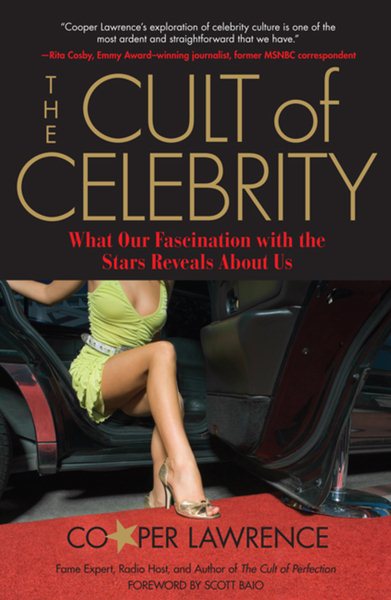
Monday, November 8, 2010
The Story of Graphic Design: From the Invention of Writing to the Birth of Digital Design
his book is an important addition to the increasingly diverse literature on the historical practice of graphic design. It is one of the few design histories to deliver a serious survey of the entire history of visual mass communication. Beginning with the development of writing systems, it goes into increasing detail as the account moves toward the 20th century. The last half of the book appropriately concentrates on the past 100 years, when design became defined as an independent discipline. The illustrations are extremely well chosen, the text eminently readable, and the insights plentiful. Graphic designer Cramsie does a superb job of walking the tightrope between condensation and comprehensiveness. This reviewer would readily recommend this book as a text in undergraduate graphic design history courses, even over the standard for such courses, Meggs' History of Graphic Design (4th ed., 2006), by P. B. Meggs and A. W. Purvis. For a compelling and truly comprehensive story of graphic design, this is the book against which others will be measured. Summing Up: Essential. All levels. Copyright 2010 American Library Association. Request The Story of Graphic Design from the catalog.
Subscribe to:
Comments (Atom)



